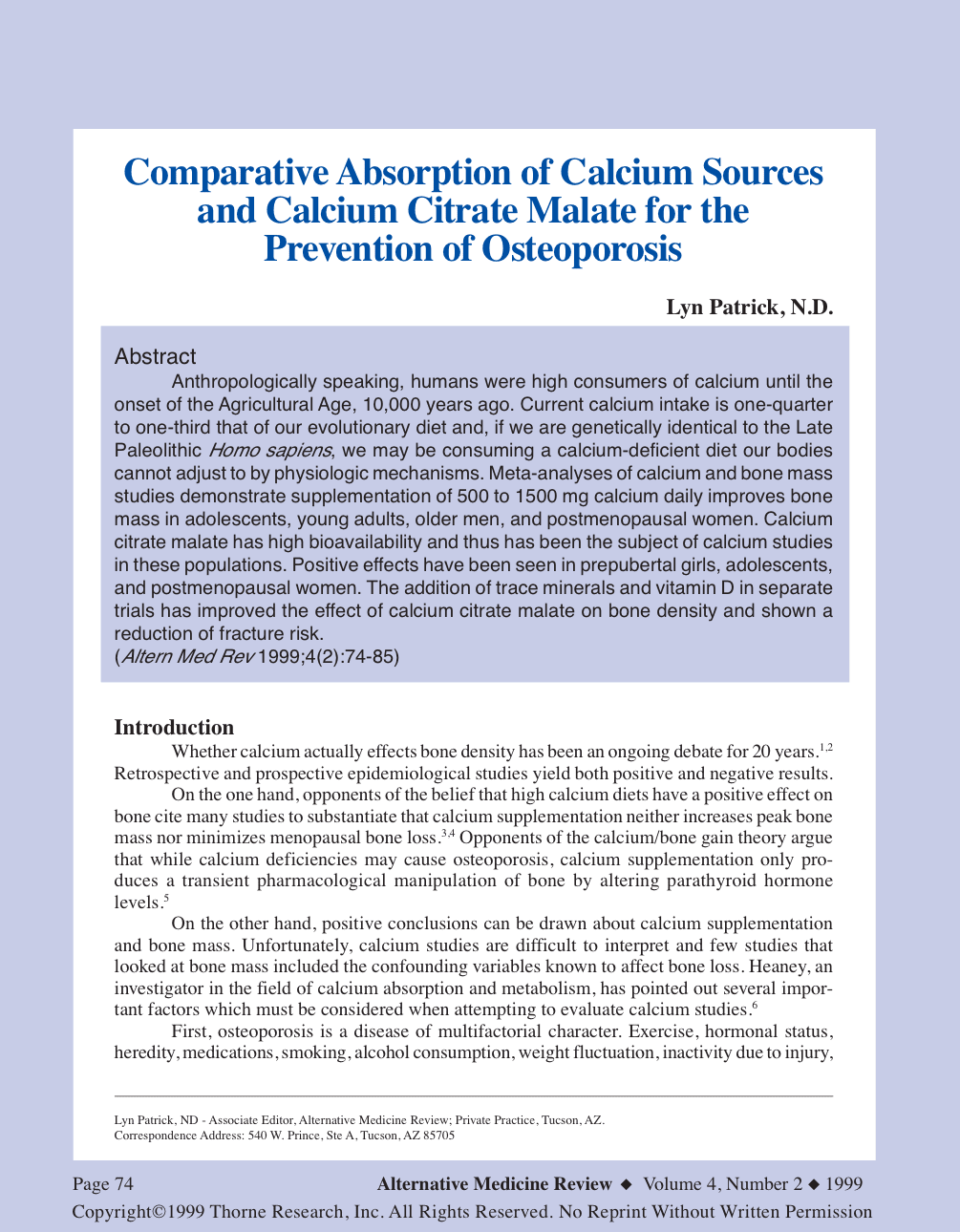Abstract
Anthropologically speaking, humans were high consumers of calcium until the onset of the Agricultural Age, 10,000 years ago. Current calcium intake is one-quarter to one-third that of our evolutionary diet and, if we are genetically identical to the Late Paleolithic Homo sapiens, we may be consuming a calcium-deficient diet our bodies cannot adjust to by physiologic mechanisms. Meta-analyses of calcium and bone mass studies demonstrate supplementation of 500 to 1500 mg calcium daily improves bone mass in adolescents, young adults, older men, and postmenopausal women. Calcium citrate malate has high bioavailability and thus has been the subject of calcium studies in these populations. Positive effects have been seen in prepubertal girls, adolescents, and postmenopausal women. The addition of trace minerals and vitamin D in separate trials has improved the effect of calcium citrate malate on bone density and shown a reduction of fracture risk. (Altern Med Rev 1999;4(2):74-85)

